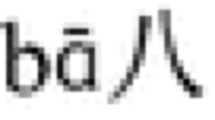Abstract
We measured subjective-tone identification thresholds evoked by acoustically filtered complex tones and compared them to Mandarin-Chinese tone-phoneme identification thresholds previously measured under the same filtering conditions. Tone phonemes were identified at intensities below subjective-tone identification thresholds, suggesting subjective tone is not necessary for tone-phoneme identification. Lower subjective-tone thresholds evoked by resolved harmonics rather than unresolved harmonics were consistent with pattern recognition theories of pitch perception.
Similar content being viewed by others
References
Abramson, A. S. (1972). Tonal experiments with standard Thai. In A. Valman (Ed.),Papers in linguistics and phonetics to the memory of Pierre Dellatre (pp. 31–44). The Haug: Mouten.
Bilsen, F. A. (1973). On the influence of the number and phase of harmonics on the perceptibility of the pitch of complex signals.Acustica, 28, 61.
Buunen, T. J. F., Festen, J. M., Bilsen, F. A., & Van den Brink, G. (1974). Phase effects in a three component signal.Journal of the Acoustical Society of America, 55, 297–303.
Cambell, R. A. (1963). Frequency discrimination of pulsed tones.Journal of the Acoustical Society of America, 36, 2007A.
Cooper, F. S., Delatre, P. C., Liberman, A. M., Borst, J. M., & Gersman, L. J. (1952). Some experiments on the perception of synthetic speech sounds.Journal of the Acoustical Society of America, 24, 597–606.
Deboer, E. (1956).On the “residue” in hearing (Doctoral dissertation, University of Amsterdam), 'S-Gravenhage, The Netherlands: Excelsor Publishers.
Flanagan, J. L., & Gutman, N. (1960). Pitch of periodic pulses.Journal of the Acoustical Society of America, 32, 1319–1328.
Fletcher, H. (1924). The physical criterion for determining the pitch of a musical tone.Physiologic Review, 23, 427–437.
Gandour, J. (1983). Tone perception in far eastern languages.Journal of Phonetics, 11, 149–175.
Gandour, J. T., & Harshman, R. A. (1978). Crosslanguage differences in tone perception: A multidimensional scaling investigation.Language and Speech, 21, 319–325.
Goldstein, J. L. (1973). An optimum processor theory for the central formation of the pitch of complex tones.Journal of the Acoustical Society of America, 54, 1496–1516.
Hoogland, G. A. (1953).The missing fundamental (Doctoral dissertation, University of Utrecht). Utrecht: The Netherlands: Druckij Fa. Schotanus en Jens.
Howie, J. M. (1976).Acoustical studies of Mandarin vowels and tones, Cambridge, England: Cambridge University Press.
Liberman, A. M., Cooper, F. S., Shankweiler, D. P., & Studdert-Kenedy, M. (1967). Perception of the speech code.Psychology Review, 74, 431–461.
Licklider, J. C. R. (1959). Three auditory theories. In S. Koch (Ed.),Psychology: A study of a science (Vol. 1, pp. 41–144). New York, McGraw-Hill. 41–144.
Mathes, R. C., & Miller, R. L. (1947). Phase effects in monaural perception.Journal of the Acoustical Society of America, 19, 780–797.
Miller, G. A., & Taylor, W. G. (1948). The perception of repeated bursts of noise.Journal of the Acoustical Society of America, 20, 171–182.
Moore, B. C. J. (1982).An introduction to the psychology of hearing (2nd ed.). New York: Academic Press.
Patterson, R. (1973). Physical variables determining residue pitch.Journal of the Acoustical Society of America, 53, 1565–1572.
Patterson, R. D. (1986). Spiral detection of periodicity and the spiral form of musical scales.Psychology of Music, 14, 44–61.
Plomp, R. (1965). Detectability threshold for combination tones.Journal of the Acoustical Society of America, 37, 1110–1123.
Ritsma, R. J. (1967). Frequencies dominate in the perception of the pitch of complex sounds.Journal of the Acoustical Society of America, 42, 191–198.
Rosenburg, A. E. (1965). Effect of masking on the pitch of periodic pulses.Journal of the Acoustical Society of America, 38, 747–758.
Schouten, J. F. (1940a). The residue, a new concept in subjective sound analysis.Proceedings Koniklijke Nederlandse Akademie, 43, 356–365.
Schouten, J. F. (1940b). The residue and the mechanism of hearing.Proceedings Koniklijke Nederlandse Akademie, 43, 991–999.
Schouten, J. F., Ritsma, R. J., & Cardozo, B. L. (1962). Pitch of the residue.Journal of the Acoustical Society of America, 34, 1418–1424.
Schroeder, M. R. (1966). Residue pitch: A remaining paradox and a possible explanation.Journal of the Acoustical Society of America, 40, 79–81.
Siegel, S., and Castellen, J. N., Jr. (1988).Nonparametric statistics for the behavioral Sciences (2nd ed.). New York: McGraw-Hill.
Small, A. M. (1955). Some parameters influencing the pitch of amplitude modulated signals.Journal of the Acoustical Society of America, 27, 751–760.
Stagray, J. R., Downs, D., & Sommers, R. K. (1992).Journal of Speech and Hearing Research, 35, 1406–1409.
Stevens, S. S. (1935). The relation of pitch to intensity.Journal of the Acoustical Society of America, 6, 150–154.
Terhardt, E. (1974). Pitch, consonance, and harmony.Journal of the Acoustical Society of America, 55, 1061–1069.
Thurlow, W. R. (1963). Perception of low auditory pitch: A multicue mediation theory.Psychological Review, 70, 515–519.
Thurlow, W. R., & Hurlow, T. F. (1959). The “missing fundamental” and related pitch effects.Perceptual and Motor Skills, 9, 315–324.
Thurlow, W. R., & Small, A. M. (1955). Pitch perception for certain periodic auditory stimuli.Journal of the Acoustical Society of America, 27, 132–137.2
Van Lancker, D., & Fromkin, F. A. (1973). Hemispheric specialization for pitch and ‘tone’: Evidence from Thai.Journal of Phonetics, 1, 101–109.
Whitfield, I. C. (1967).The auditory pathway. London: Arnold.
Whitfield, I. C. (1970). Central nervous processing in relation to spacio-temporal discrimination of auditory patterns. In R. Plomp & G. F. Smoorenborg (Eds.),Frequency Analysis and Periodicity Detection in Hearing. Leiden, The Netherlands: Sijthoff.
Zwicker, E., Flottrop, G., & Stevens, S. S. (1957). Critical bandwidths in loudness summation.Journal of Speech and Hearing Disorders, 29, 548–557.
Author information
Authors and Affiliations
Additional information
The authors thank Donald Gans and Richard Klich for all their help.
Rights and permissions
About this article
Cite this article
Stagray, J.R., Downs, D. & Sommers, R.K. Contributions of subjective-tone to tone-phoneme identification. J Psycholinguist Res 21, 511–524 (1992). https://doi.org/10.1007/BF01067528
Issue Date:
DOI: https://doi.org/10.1007/BF01067528




